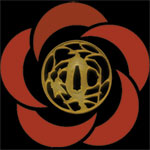 |
Seiza (正座) and Tate-hiza (立て膝)by Jason Williams, Ryushinkan Dojo, London// Источник: B.A.F. Newsletter, Сентябрь 2004, No 48Most of the following is what I learned from my Aikido teacher, Hifumi Nonaka Sensei, while I lived on the southern island of Kyushu, in Miyazaki prefecture. He studied Aikido with O-sensei and also the Jikishin-Kageryu sword style and Zen under the famous teacher, Sogen Omori. His lifework has been to research and pass on the meaning and worth of etiquette in Japanese budo, not only to martial artists but also to the general public. Japanese martial arts require practitioners to sit in seiza (correct sitting) and this is considered now to be the most typically representative Japanese way of sitting. In modern Japan Japanese people automatically sit in seiza when the atmosphere is even slightly formal until told to relax by the host. Seiza was traditionally for those of low status and a way of showing deference to a superior. I read somewhere that showing the underside of your feet, especially behind you, was considered dangerous as it exposed vital points. Some sword schools stated that piercing a point on the sole of the foot would lead to certain death. So traditionally seiza was not as widespread among the samurai class as might be thought today. If we look at Iaido, only the first ten or so basic moves are performed from seiza and then the practitioner moves on to the so-called 'knee-raised section' (tate-hiza no bu). Nakayama Hakudo, one of the most famous swordsman of the modern era, is said to be mostly responsible for the spread of seiza in Japanese martial arts. He was asked to perform in front of the Emperor and chose to do the whole exhibition in seiza, thinking it was more appropriate. Afterwards this became fashionable and seiza became more widespread. The expression 'seiza' only came about in the 1920s but in some countryside areas of Japan you can still hear older people calling it hiza-matsuku, meaning 'to bend the knees' and has the same deferential meaning as the English expression. Interestingly, the Japanese characters for hiza-matsuku are 'legs' and 'dangerous'. Traditionally there was no practice from seiza when wearing a long sword. From a seated posture the sword was drawn usually by the tate-hiza method and in modern Iaido this posture is practiced after the practitioner has a firm grounding in the seiza section. The tate-hiza method, where one knee is raised and the other is touching the ground, requires more flexibility in the hips and legs than seiza and for many people getting into this posture is difficult enough without having to think about moving smoothly forward while drawing the sword. However, this posture was considered much more advantageous than seiza. Aikido often uses the image of a pyramid to understand a stable base, but I have heard some teachers describe the tate-hiza posture as an inverted pyramid. At first it seems very unstable but once the practitioner can control the balance the relative instability provides a great potential for movement. The soles of the feet are far less exposed and it is easy to see why the samurai favoured this position. I only ever saw Nonaka Sensei in seiza when we bowed at the start and end of the practice and during suwari-waza, otherwise he was always in the tate-hiza posture. There is an even older form than tate-hiza where both knees are off the ground, using the balls of the feet to support the body as in kiza, but this method has apparently all but disappeared in most dojos in Japan. Из словаря
|
|||||||||||||||||||||||||||||||||||||||||||
| © Рюсинкан.ру |
